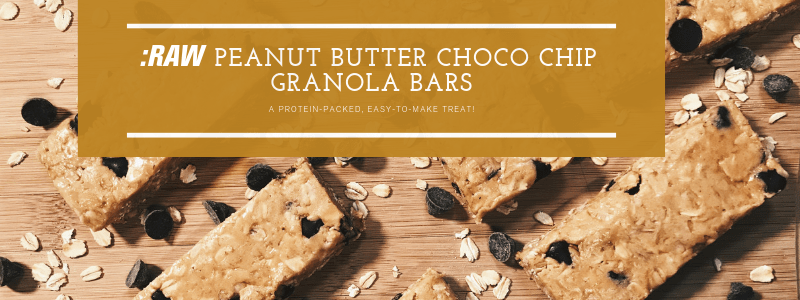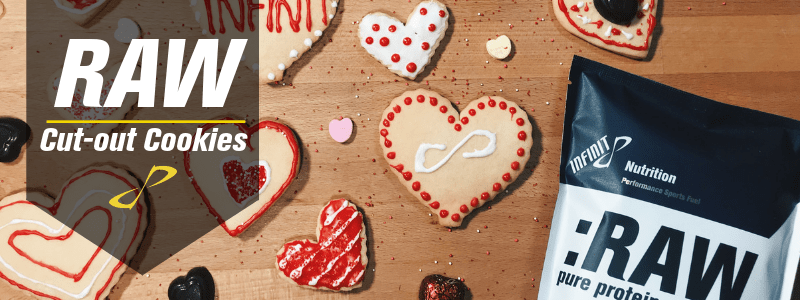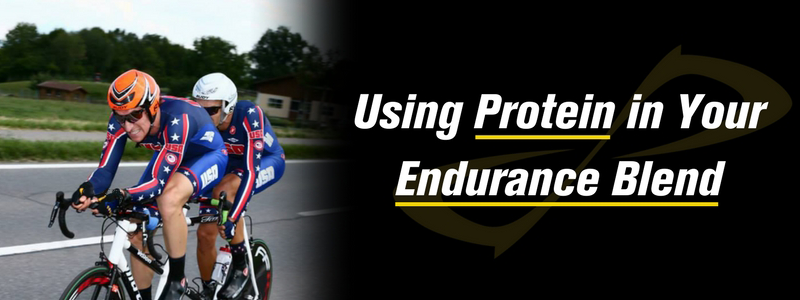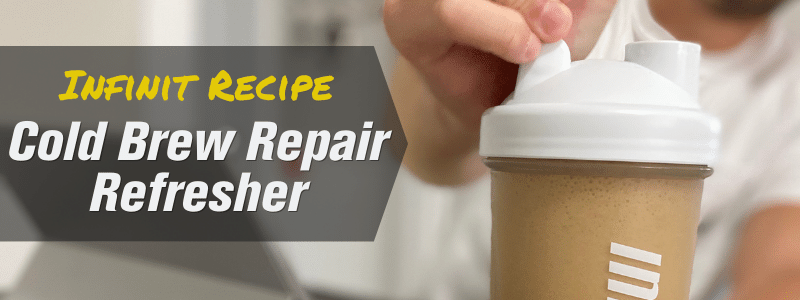Choosing the Best Protein Powder for You
- 25 Jan 2019
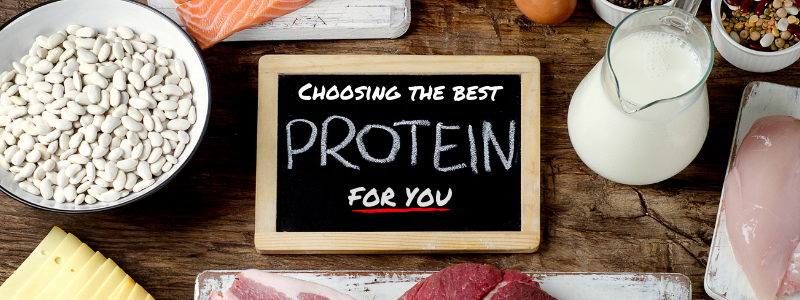
By Alison Wheeler, MS
Have you recently starting working out more? Are you training for an endurance race? Or do you just need more protein in your diet?
No matter how much (or little) you know about nutrition, everyone knows protein is an important part of performance, recovery, and overall health! It is recommended that average adults get a minimum of 0.8 grams of protein per kilogram of body weight per day (or 0.36 grams per pound of body weight).1 This works out to be about 45 grams for a 125 pound adult and up to 73 grams for a 200 pound adult.
However, several factors can impact this number including activity, age, muscle mass, and current state of health.2 Athletes and people who are active have increased protein needs to help repair their muscle tissue and assist in training adaptations. The Academy of Nutrition and Dieteticsrecommends athletes and active individuals consume 1.2 to 2.0 grams of protein per kilogram of body weight per day, depending on training intensity.3,4

While average adults can easily meet (or exceed) their daily protein goals, athletes, especially those doing high intensity or long duration training, can find it difficult to meet their protein needs through food alone. This is where a good protein supplement comes in!
There are a dizzying array of protein powders on the market. Just walk through your local grocery store or pharmacy and you’ll see shelves full of these ever-popular dietary supplements.
If you’ve decided you need to up your protein game and supplement your intake with a protein powder, the next step is figuring out which of the thousands of options out there is right for you. To help you make this decision, we’ve broken down everything you need to know about protein supplements.
Let’s start by going over the basics…
Building Blocks of Protein
Protein is an important macronutrient found in every cell of the body. Proteins are made of building blocks called amino acids that help grow and maintain the body's tissues. Some amino acids cannot be made by the body and must come from the food you eat. These amino acids are called essential amino acids.5
Three of the nine essential amino acids are called branched-chain amino acids (BCAAs). These aminos have been found to increase muscle function, and decrease muscle protein breakdown and soreness following exercise (more on this later).6,7

Protein is found in both animal and plant-based foods. Foods that contain all 9 essential amino acids are considered a complete protein. Complete proteins provide your body with the right amount of the essential amino acids to keep your body going.11 Animal products (dairy products, eggs, meat, poultry and seafood) and soy are all considered complete protein sources.
An incomplete protein contains some, but not all, of the essential amino acids. Most plant-based protein sources (beans and peas, grains, nuts, seeds, vegetables) are incomplete. This is no problem though! Incomplete proteins can be combined at meals or throughout the day so that together, they make a complete, complementary protein. Think rice and beans or peanut butter and toast.11
What’s so important about Branched-Chain Amino Acids (BCAAs)?
The three amino acids that make up the BCAAs are leucine, isoleucine and valine. BCAAs can be found in a number of foods including dairy, meat, poultry, eggs, fish, soy products, nuts, seeds, and beans. Protein powders also naturally contain BCAAs, along with other amino acids, but because of their performance improving benefits, you will often see them fortified with additional BCAAs.
So why is there so much focus on these three specific amino acids? With or without the additional stress that comes with exercise, your body’s muscle proteins are in a constant cycle of breakdown and repair but the breakdown happens at a greater rate in active bodies.5

Protein in the diet plays an important role in making sure your body has the amino acids it needs for this muscle repair, specifically the branched-chain amino acids (BCAAs). Research shows that consuming BCAAs (through diet or supplementation) produces better results than passive recovery or rest following intense exercise. This is likely due to their role in decreasing muscle protein breakdown, muscle soreness and improving muscle function.5,6
Of the three BCAAs, leucine seems to have the biggest impact on muscle repair.12 Many studies have shown that high proportions of BCAAs in a protein source, with emphasis on leucine, can have the best impact on stimulating muscle repair.13 Isoleucine plays a role in regulating blood sugar and energy levels while valine plays a role in cognitive function, muscle coordination and energy.14,15
*INFINIT’s whey protein isolate has a 25% higher BCAA composition as compared to other protein sources.
Concentrate vs. Isolate
The primary difference between a concentrate and isolate is the amount of protein found in the powder. You will regularly see these terms listed on the packaging for whey proteins, but they are also used to categorize other proteins as well. In general, isolates are considered the gold standard of protein supplements because of their very high protein content.
Whey and casein are milk proteins that are commonly used as protein supplements because they both contain all 9 essential amino acids and are considered a complete protein.7

Liquid whey goes through a filtration process before it is dried into a powder. Whey protein concentrate contains anywhere from 25-80% protein per serving, with the remaining calories coming from fat and carbohydrates. Whey protein isolate goes through an ultra-filtration process to almost completely remove the fat and carbohydrates and as a result, contains at least 90% protein.8
Because whey is a milk protein, it does contain some lactose. Those who are lactose intolerant may prefer an isolate protein due to their purity and the extremely low amounts of lactose.7
*INFINIT uses a whey protein isolate that contains all essential amino acids and has a 25% higher branched-chain amino acid (BCAA) composition as compared to other protein sources.
Grass-fed vs. Conventional Grain-fed Whey
What a cow is fed can undeniably impact the nutritional content of both the milk and meat it produces. Conventional methods of raising livestock use grains as feed to promote growth at a faster than normal rate, theoretically leading to increased output. Grass-fed dairy cows freely graze in fields with naturally grown grass, are typically free of antibiotics, steroids and pesticides, and mimic normal growth rates and output.9,10

Grass-fed whey protein isolate can have increased levels of omega-3 (healthy fat), CLA (a fatty acid know to help reduce body fat), B and E vitamins, calcium, magnesium and potassium. It’s important to note that most of these nutrients are found in the fat content of whey. Because a majority of the fat is removed from whey protein isolate, it’s unclear if these nutritional benefits are actually seen in the isolate form. Regardless, grass-fed protein has improved amino acid and immune supporting nutrients as well as a smaller carbon footprint.9,10
*INFINIT’s whey protein isolate comes from grass-fed cows.
What about Plant-based or Vegan Proteins?
Plant-based protein sources are not only for vegetarians and vegans! The USDA recommends eating a variety of animal and plant-based protein foods, so don’t be afraid to mix it up and incorporate new protein sources into your diet. Diets lower in meat, specifically processed meats and poultry, can reduce your risk of heart disease, type 2 diabetes, obesity and some cancers.11
*INFINIT Vegan Blend consists of 50% organic brown rice protein and 50% faba (aka "fava") bean protein to make it a complete protein source. This can be added to any of our custom blends.
Absorption Rates
Absorption is the amount of a nutrient that passes through the lining of the intestines into the blood. Different protein sources are absorbed and used by the body at varying rates. The other factor that should be considered is bioavailability, which reflects the amount of a nutrient that is actually used by the body for a specific function after it is absorbed.16
Whey is a fast-absorbing protein that starts being utilized by the body within the first 1.5 hours of consumption, and has been shown to be very effective in recovery and muscle repair when taken immediately after exercise.17 However, due to this quick absorption rate, benefits will subside unless you consume additional protein a few hours later, and regularly throughout the day.
Casein and plant-based proteins are slower-absorbing proteins which means they have less of an impact on muscle repair immediately after consumption, but can have a slower and longer effect of preventing protein breakdown because they spend more time circulating in your body.18It’s recommended that casein is consumed before bed because of it’s slow absorbing nature. This slow release of amino acids help to slow down natural protein breakdown that occurs during the overnight fast, and helps to provide the body what it needs to repair and rebuild during sleep.
So Which is Best?
The answer might actually be a combination! Research has shown that combining fast and slow-absorbing proteins into one supplement can optimize recovery after exercise.19 This makes sense because a fast-absorbing protein will work most efficiently in the few hours following consumption where the slow-absorbing protein will continue to help your body recovery several hours after consumption.
This is the same concept that was used in the development of many of INFINIT’s recovery formulas, including REPAIR and NOCTURNE:
:RAW Pure Protein Recovery is pure grass-fed whey protein isolate
:MUD Pre-Workout Meal Supplement contains grass-fed whey protein isolate
:REPAIR contains whey protein isolate + soy protein isolate + casein*
:NOCTURNE night-time repair contains whey protein isolate + casein*
| Source (Animal or Plant) | Absorption (Fast, Moderate or Slow) | Allergen / Food Sensitivity Concerns | Gluten Free | Protein Content (per 1 gram)** | BCAA Content (per 1 gram)** | Leucine Content (per 1 gram)** |
Whey Protein Isolate | Animal (milk) | Fast | Milk; contains trace amounts of lactose | Yes* | 90% | 225 mg | 105 mg |
Casein | Animal (milk) | Slow | Milk; contains trace amounts of lactose | Yes* | 92% | 182 mg | 80 mg |
Soy Protein Isolate | Plant | Moderate | Soy | Yes | 87% | 159 mg | 72 mg |
Egg White | Animal | Moderate | Egg, Albumin | Yes | 82% | 182 mg | 71 mg |
Faba Bean Protein | Plant | Moderate | None | Yes | 58% | 81 mg | 36 mg |
Organic Brown Rice Protein | Plant | Moderate | None | Yes | 83% | 141 mg | 62 mg |
*All types of plain cow’s milk are naturally gluten free, including Casein protein. Gluten damages the lining of the small intestine in those with Celiac disease, which leads to a loss of lactase (the enzyme that breaks down lactose, the sugar found in milk). Lactose intolerance is commonly seen in Celiac patients but it’s important to note that because gluten is not present in milk, these GI symptoms are related to the lack of lactase, not gluten.20
**Protein values above reflect specific protein sources used in INFINIT products.
As an active person or athlete, it’s clear you need to focus on your protein intake. To do this, it is recommended that you consume a variety of high-quality protein foods, as part of a balanced diet, throughout the day by ensuring you are incorporating protein into meals and snacks. A protein supplement is a convenient way to ensure you’re getting the protein you need with special focus on optimizing your workouts by aiding in post-workout recovery.
At the end of the day, choosing the right protein for you comes down to your specific protein and recovery needs; but more importantly, the quality of the ingredients that go into creating your protein supplement.
Shop protein & recovery formulas or contact us for help determining which supplement is right for you!
About the Author
Alison Wheeler, MS is a 2018-2019 Dietetic student intern who currently is completing her final year at the University of Cincinnati in preparation to become a Registered Dietitian Nutritionist. INFINIT Nutrition is proud to partner with the University of Cincinnati's Coordinated Program in Dietetics (CPD) to provide our next generation of nutrition professionals an opportunity to spend time with the INFINIT Team and gain real-life experience of working at a sports nutrition company.
References
Institute of Medicine. 2005. Dietary Reference Intakes for Energy, Carbohydrate, Fiber, Fat, Fatty Acids, Cholesterol, Protein, and Amino Acids. Washington, DC: The National Academies Press. https://doi.org/10.17226/10490.
Protein and the Athlete - How Much Do You Need? Eat Right. Academy of Nutrition and Dietetics. https://www.eatright.org/fitness/sports-and-performance/fueling-your-workout/protein-and-the-athlete. Accessed January 18, 2019.
Thomas DT, Erdman KA, Burke LM. Position of the Academy of Nutrition and Dietetics, Dietitians of Canada, and the American College of Sports Medicine: Nutrition and Athletic Performance. J Acad Nutr Diet. 2016;116(3):501-28.
Teaching Dietary Protein Basics. eatrightPRO - Academy of Nutrition and Dietetics. http://www.eatrightpro.org/practice/practice-resources/international-nutrition-pilot-project/teaching-dietary-protein-basics. Accessed January 18, 2019.
Mohammad HR, Shab-Bidar S, Mollahosseini M, Djafarian K. Branched-chain amino acid supplementation and exercise-induced muscle damage in exercise recovery: A meta-analysis of randomized clinical trials. Nutrition. 2017;42:30-36.
Tipton KD, Hamilton DL, Gallagher IJ. Assessing the Role of Muscle Protein Breakdown in Response to Nutrition and Exercise in Humans. Sports Med. 2018;48(Suppl 1):53-64.
Whey Protein Isolate vs Concentrate: What's The Difference? Healthline. https://www.healthline.com/nutrition/whey-protein-isolate-vs-concentrate. Accessed January 18, 2019.
How Whey Comes from Milk and Transforms Into a Protein-Packed Powder. Whey Protein Institute. http://wheyproteininstitute.org/blog/whats-the-difference-between-whey-protein-isolate-and-concentrate. Accessed January 18, 2019.
Grass-Fed vs. Grain-Fed Whey Protein - How Do They Compare? Transparent Labs. https://www.transparentlabs.com/blogs/all/63992003-grass-fed-vs-grain-fed-whey-protein-how-do-they-compare. Accessed January 18, 2019.
Grass Fed Whey Vs. Regular Whey Protein: Is There a Difference? The Source - VitaminWorld. http://blog.vitaminworld.com/grass-fed-whey-vs-regular-whey-protein-difference/. Published May 8, 2017. Accessed January 18, 2019.
https://www.accessdata.fda.gov/scripts/interactivenutritionfactslabel/factsheets/Protein.pdf
Eva Blomstrand, Jörgen Eliasson, Haåkan K. R. Karlsson, Rickard Köhnke; Branched-Chain Amino Acids Activate Key Enzymes in Protein Synthesis after Physical Exercise, The Journal of Nutrition, Volume 136, Issue 1, 1 January 2006, Pages 269S–273S.
Jäger R, Kerksick CM, Campbell BI, et al. International Society of Sports Nutrition Position Stand: protein and exercise. J Int Soc Sports Nutr. 2017;14:20. Published 2017 Jun 20. doi:10.1186/s12970-017-0177-8
Isoleucine. National Center for Biotechnology Information. PubChem Compound Database; CID=6306, https://pubchem.ncbi.nlm.nih.gov/compound/6306 (accessed Jan. 18, 2019).
Valine. National Center for Biotechnology Information. PubChem Compound Database; CID=6287, https://pubchem.ncbi.nlm.nih.gov/compound/6287 (accessed Jan. 18, 2019).
Bioavailability. NeuroImage. https://www.sciencedirect.com/topics/pharmacology-toxicology-and-pharmaceutical-science/bioavailability. Accessed January 18, 2019.
West DWD, Abou Sawan S, Mazzulla M, Williamson E, Moore DR. Whey Protein Supplementation Enhances Whole Body Protein Metabolism and Performance Recovery after Resistance Exercise: A Double-Blind Crossover Study. Nutrients. 2017;9(7):735. Published 2017 Jul 11. doi:10.3390/nu9070735
https://labdoor.com/article/fast-vs-slow-proteins-understanding-the-effects-of-absorption
Reidy PT, Walker DK, Dickinson JM, et al. Protein blend ingestion following resistance exercise promotes human muscle protein synthesis. J Nutr. 2013;143(4):410-6.
https://www.beyondceliac.org/gluten-free-diet/is-it-gluten-free/milk/


